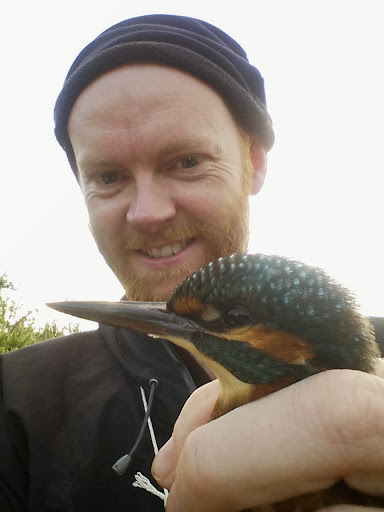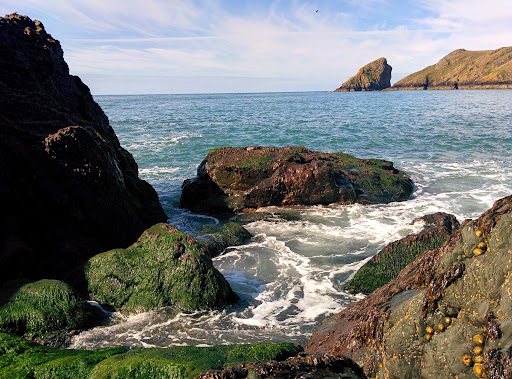The Teifi ringing group invited me along to another ringing session yesterday morning. There wasn't much of a sunrise, but it did light up the clouds briefly. The nets I was ringing from were all in the reed bed, whereas the CES ones last time are mostly in scrub. This meant plenty of Sedge and Reed warblers, with a few blue tits later on. It's pretty incredible to think that these small birds will soon fly all the way to Africa for the winter.
One interesting thing to see in the plumage of these birds is growth bars. If there is an change in food supply while the feathers are growing it can leave a mark. In a juvenile which grows its tail all at once it shows up all the way across.










